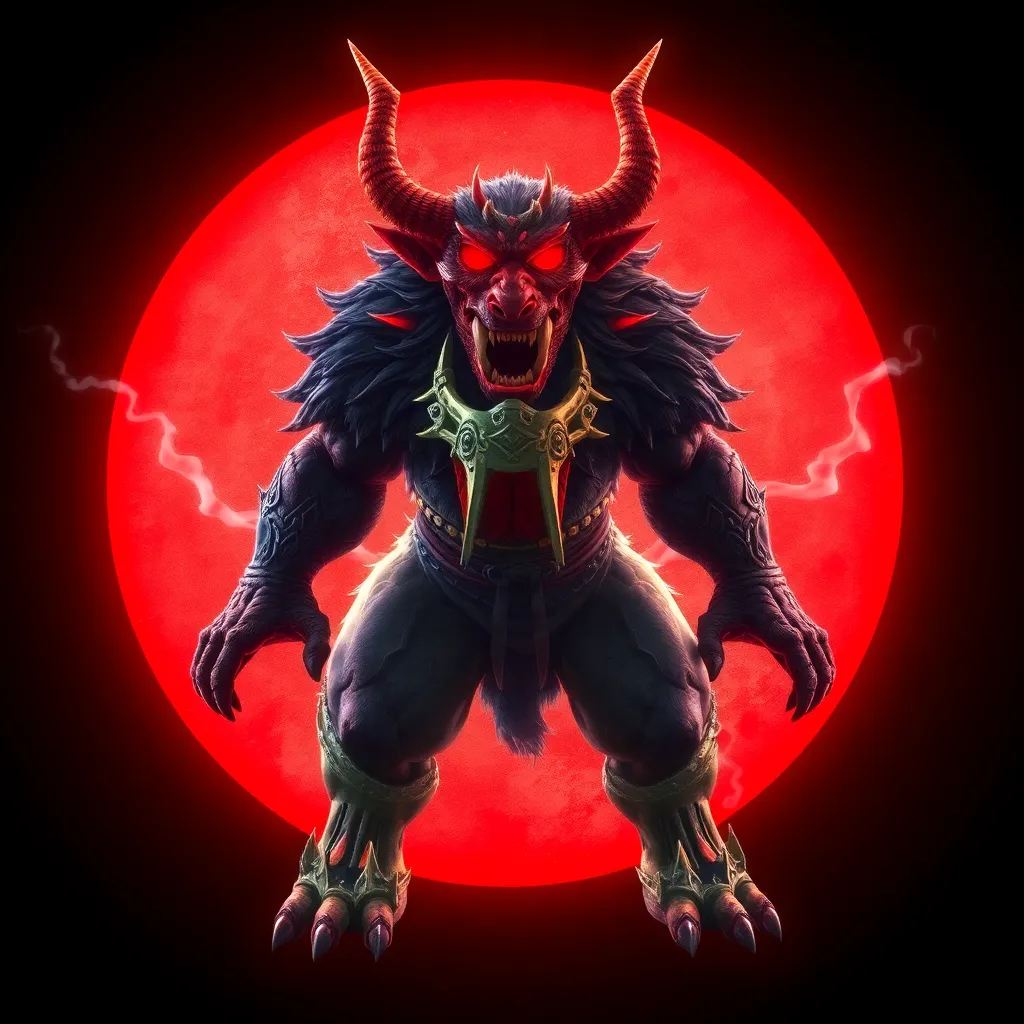From Fearsome Beasts to Guardian Spirits: The Evolution of Oni in Japanese Culture
I. Introduction
Oni are formidable figures in Japanese mythology, often depicted as ogre-like demons that embody chaos and mischief. Traditionally characterized by their horned heads, sharp claws, and vibrant skin—ranging from red to blue—Oni have played a significant role in shaping Japanese cultural narratives and beliefs.
Throughout history, Oni have transitioned from being fearsome creatures associated with malevolence to becoming protective spirits that serve as guardians against evil and misfortune. This article explores the evolution of Oni in Japanese culture, tracing their historical origins, characteristics, and their transformation in modern society.
II. Historical Origins of Oni
The roots of Oni can be traced back to ancient Japanese texts and folklore, where they were often described as malevolent beings that brought disaster and illness.
- Early depictions of Oni: In texts like the “Nihon Shoki” (Chronicles of Japan) and various folktales, Oni were described as creatures that terrorized villages and caused suffering.
- Influence of Chinese mythology: The concept of Oni was significantly shaped by Chinese mythological figures, particularly the “Yaoguai” or demon-like beings that often served as antagonists in stories.
- Role in early religious practices: Oni were incorporated into Shinto belief systems, where they were sometimes viewed as spirits of the deceased or as manifestations of natural disasters.
III. Characteristics and Symbolism of Oni
Oni are characterized by several distinctive physical traits and symbolic meanings, which can vary across different regions of Japan.
- Physical traits: Oni are typically depicted with:
- Horns protruding from their heads
- Wild, unkempt hair
- Fangs and claws, emphasizing their ferocity
- Brightly colored skin, commonly red or blue
- Dual nature: Oni embody a duality, representing:
- The fearsome aspects of chaos and destruction
- The protective qualities, often warding off evil spirits
- Symbolic meanings: In various contexts, Oni symbolize:
- Fear and danger in folklore and cautionary tales
- Protection and strength in rituals and festivals
IV. Oni in Traditional Folklore and Literature
Oni play a significant role in traditional Japanese folklore and literature, appearing in various tales and theatrical performances.
- Popular folktales: Notable stories such as:
- Momotaro: A tale of a boy born from a peach who defeats a band of Oni.
- Shita-kiri Suzume: A story about a sparrow that befriends an Oni, highlighting the complexity of their character.
- Portrayal in classical literature: Oni have been featured in Noh and Kabuki theater, often symbolizing the conflict between good and evil.
- Cultural identity: The stories of Oni have contributed to the formation of Japanese cultural identity, reflecting societal values and fears.
V. The Transformation of Oni in Modern Culture
In contemporary Japan, the representation of Oni has evolved significantly, reflecting changing societal attitudes and cultural expressions.
- Representation in media: Oni appear in various forms of modern entertainment, including:
- Anime and manga, where they are often depicted as complex characters with depth.
- Films that explore their narratives beyond the traditional fearsome image.
- Shifts in public perception: The perception of Oni has shifted from purely villains to:
- Allies or anti-heroes in stories.
- Symbols of resilience and protection in popular culture.
- Role in festivals: Oni are celebrated in various festivals, such as:
- Setsubun, where beans are thrown to drive away Oni, symbolizing purification.
- Regional festivals that honor Oni as protective figures.
VI. Oni as Guardian Spirits and Protectors
As Oni have transitioned into more protective roles, they are often seen as guardians against evil and misfortune.
- Concept of protection: Oni are revered in some traditions for their role in:
- Protecting homes and communities from malevolent spirits.
- Serving as powerful figures during rituals intended to ward off misfortune.
- Rituals and practices: Various practices involving Oni include:
- Rituals performed during the New Year to invite good fortune.
- Amulets and talismans featuring Oni imagery for protection.
- Regional variations: Different regions of Japan have unique practices regarding Oni, with some communities venerating specific Oni as local protectors.
VII. Comparative Analysis with Other Mythical Beings
Comparing Oni with other mythological creatures reveals insights into cultural interpretations of fear and protection.
- Similarities and differences: While Oni share traits with:
- Western demons, both embody chaos; however, Oni often possess protective qualities.
- Other Asian spirits, they uniquely reflect Japan’s cultural values and fears.
- Fear and protection: Various cultures interpret monstrous beings as:
- Symbols of societal fears, often representing chaos and misfortune.
- Guardians that provide safety against these fears.
- Insights into cultural perception: The duality of fearsome beings highlights:
- The complexity of human emotions toward danger and safety.
- The universal need for protection against evil forces.
VIII. Conclusion
The evolution of Oni in Japanese culture reflects a profound transformation from fearsome beasts to revered guardian spirits. This journey underscores the dynamic nature of folklore and the ability of cultural symbols to adapt to societal changes.
As Oni continue to resonate in contemporary society, they remind us of the importance of understanding and respecting cultural narratives. By exploring figures like Oni, we gain insight into the broader human experience and the cultural symbols that shape our worldviews.
In a global context, recognizing the significance of mythical beings like Oni fosters a deeper appreciation for the diverse ways cultures interpret fear, protection, and the complexities of the human experience.




